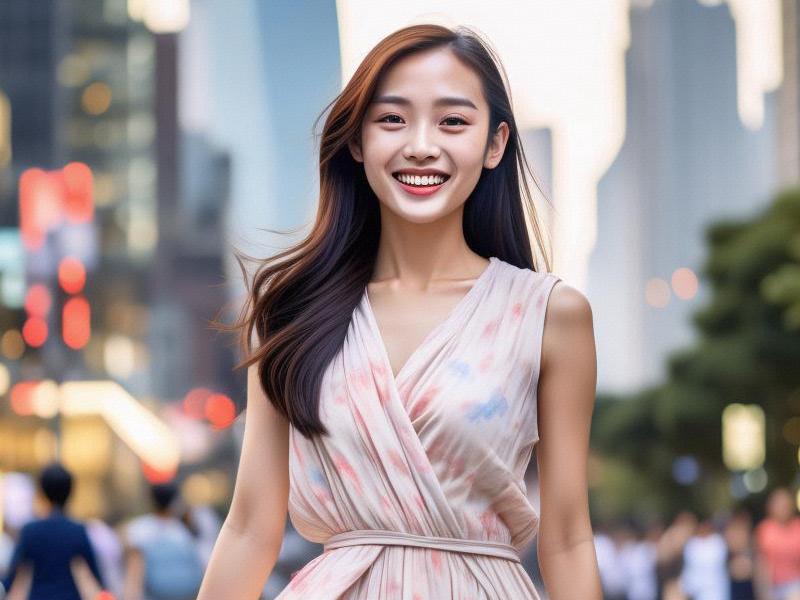This article delves into the evolution of the elegant ladies of Shanghai, exploring their unique style, the historical context that shaped them, and their influence on modern fashion. From the 1920s to the present day, Shanghai's women have been a symbol of grace and sophistication, embodying the city's dynamic spirit.

In the heart of China, where the Huangpu River meets the bustling metropolis of Shanghai, there exists a timeless elegance that has captivated the world. The "Beautiful Ladies of Shanghai" are not just a representation of physical beauty but also a testament to the city's rich cultural heritage and its ever-evolving fashion scene. This article embarks on a journey through time, exploring the historical context, the unique style, and the enduring influence of these elegant ladies.
The 1920s and 1930s marked the golden era of Shanghai, often referred to as the "Paris of the East." During this period, Shanghai was a cosmopolitan city, a melting pot of cultures from China and abroad. The women of this era were known as "Shanghai beauties," and they set the standard for elegance and sophistication. Influenced by Western fashion trends, they embraced a blend of traditional Chinese attire and modern European styles, creating a unique aesthetic that was both alluring and sophisticated.
One of the most iconic figures of this era was the "Glamorous Lady" or "Moga" (short for Modern Girl). These women were independent, educated, and fashion-forward. They wore tailored qipaos (traditional Chinese dresses) with Western-style collars and cuffs, paired with high heels and silk stockings. Their hair was styled in fashionable up-dos, and they adorned themselves with delicate jewelry. The Moga girls were not just fashion icons but also symbols of the changing roles of women in society. They were educated, worked outside the home, and enjoyed a level of freedom that was unprecedented at the time.
爱上海最新论坛 The 1940s brought significant changes to Shanghai, as the city became a battleground during the Second Sino-Japanese War. Despite the turmoil, the spirit of the Shanghai women remained unbroken. They adapted their style to the wartime conditions, using fabrics that were more readily available and creating outfits that were both practical and stylish. The qipao evolved to become simpler in design, with darker colors and fewer embellishments. However, the essence of elegance and grace remained intact.
After the founding of the People's Republic of China in 1949, Shanghai's fashion scene underwent a transformation. The emphasis shifted from Western-inspired styles to more traditional and utilitarian clothing. The qipao was still worn but in a more subdued manner, reflecting the new societal norms. Despite these changes, the women of Shanghai continued to embody a sense of elegance and sophistication that was uniquely their own.
The 1980s marked a renaissance for Shanghai's fashion scene. As the city began to open up to the world, it experienced an economic boom that brought with it a renewed interest in fashion. The "Shanghai ladies" of this era embraced a blend of traditional and modern styles, once again setting trends that influenced not only China but also the global fashion industry. They wore qipaos with modern cuts and vibrant colors, paired with stylish accessories. The revival of traditional Chinese elements in fashion was a nod to the city's rich cultural heritage while also embracing the modern world.
上海私人外卖工作室联系方式
In recent years, Shanghai has solidified its position as a global fashion capital. The city is home to numerous fashion designers, boutiques, and fashion weeks that attract the attention of the international fashion community. The elegant ladies of Shanghai continue to be a source of inspiration for designers and fashion enthusiasts around the world. They embody a perfect blend of tradition and modernity, with their style reflecting the city's dynamic spirit.
One of the most notable aspects of Shanghai's fashion scene is the emphasis on individuality. Unlike the uniformity of fashion trends in some other cities, Shanghai's women are known for their unique sense of style. They effortlessly combine traditional Chinese elements with modern Western fashion, creating looks that are both distinctive and sophisticated. This ability to blend the old with the new is a testament to the city's rich cultural heritage and its openness to the world.
爱上海同城对对碰交友论坛 The influence of Shanghai's elegant ladies extends beyond the fashion world. They have played a significant role in shaping the city's culture and society. From the Moga girls of the 1920s to the modern-day fashion icons, these women have been trailblazers in various fields, including art, literature, business, and politics. Their confidence, intelligence, and elegance have made them role models for generations of young women.
The beauty of Shanghai's ladies is not just in their appearance but also in their spirit. They embody the essence of the city itself: vibrant, dynamic, and ever-evolving. Whether they are walking along the Bund, sipping tea in a traditional teahouse, or strutting down the runway at a fashion show, they exude a sense of grace and sophistication that is uniquely their own.
In conclusion, the elegant ladies of Shanghai are more than just fashion icons; they are symbols of the city's rich cultural heritage and its dynamic spirit. From the glamour of the 1920s to the modern-day fashion scene, they have consistently set trends and inspired others with their unique style and grace. As Shanghai continues to grow and evolve, the legacy of its elegant ladies will undoubtedly endure, serving as a reminder of the city's timeless beauty and charm.
The story of the beautiful ladies of Shanghai is a testament to the power of fashion and style to transcend time and cultural boundaries. It is a story of elegance, sophistication, and the enduring spirit of a city that has always been at the forefront of change. As we look to the future, the elegant ladies of Shanghai will continue to be a source of inspiration, reminding us all of the beauty and grace that can be found in the blending of tradition and modernity.